Representational image
Last November, a climate deal was agreed between the governments of the US and China.

Last November, a climate deal was agreed between the governments of the US and China. The agreement was hailed globally as being historic. The deal entails a US commitment of a 28% reduction in 2005 levels of Greenhouse Gas (GHG) emissions by 2025, and a Chinese engagement to cap emissions by 2030.
Some have questioned whether these cuts are attainable, particularly for China which recently witnessed a large-scale financial crash. Nevertheless, climate cooperation between two countries that are strategic to climate change mitigation is an encouraging step going forward.
Both the governments have shown promising leadership in acknowledging the necessity of global action against what is undoubtedly the defining challenge of our time. Should India follow a similar model and would such a model be beneficial for the country and the rest of the world at large?
Climate change affects vulnerable, poor and marginalised communities differently, and thus, contributes to growing inequality. In the face of such adversity, a climate deal that promotes equity would be essential – the G2 deal, however, does not uphold this.
Furthermore, data analysis reveals that the converging point of emission levels for China and the US is “too high”, which would continue to feed dangerous and irreversible climate change.
The deal is expected to tackle global warming effectively in order to stay in line with the internationally accepted objective of preventing the increase in average global temperature beyond 2oC, compared to pre-industrial levels. This might be far-fetched as calculations show, that by 2030, China’s CO2 emissions per capita will increase to 12 tonnes (figure 1), abundantly transcending the global average.
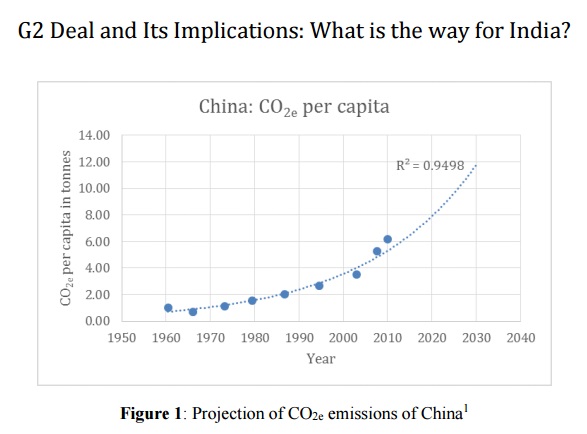
Source: World Bank
Our models similarly underline, how the US plan of reducing GHG levels by 28% will lead to a per capita emission of 13 tonnes CO2e in 2030 (figure 2: 2005 levels discounted by 28% gives 4,430 million tonnes of CO2e released or 13 tonnes per capita with respect to 2030 population).
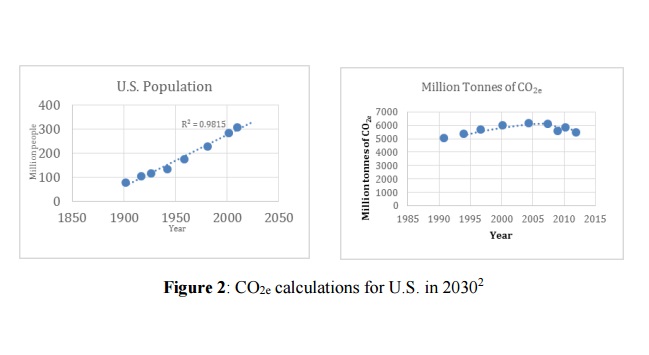
Source: World Bank
If every country had similar freedom in emitting such extravagant levels of CO2e, the two degree Celsius temperature goal would be generously exceeded. The overall agreement of the US-China convergence to CO2e per capita levels of 12 or 13 tonnes seems to be a bold justification to the US’ and China’s unreasonable contribution to climate change.
Calculations suggest that per capita CO2e emission should be restricted to 6.8 tonnes by 2065 in order to limit the global temperature rise by two degree Celsius, following business as usual (BAU) scenario (figures 3 and 4). World population will have risen to 10.5 billion by then (figure 5).
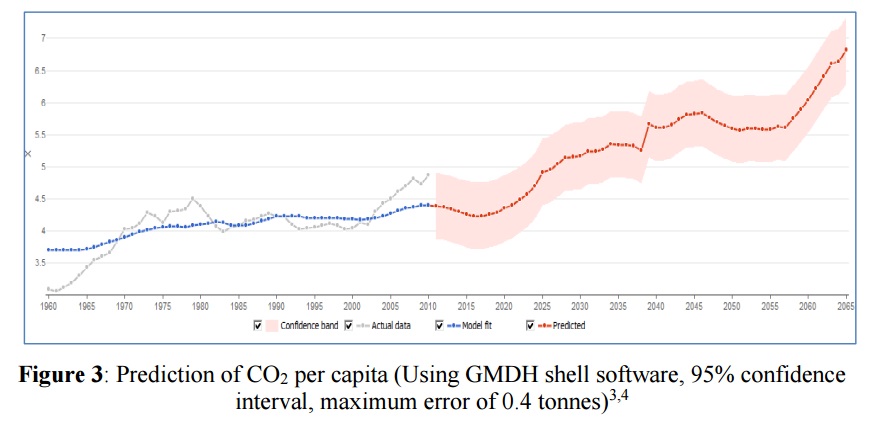
Source: GMDH Shelland World bank
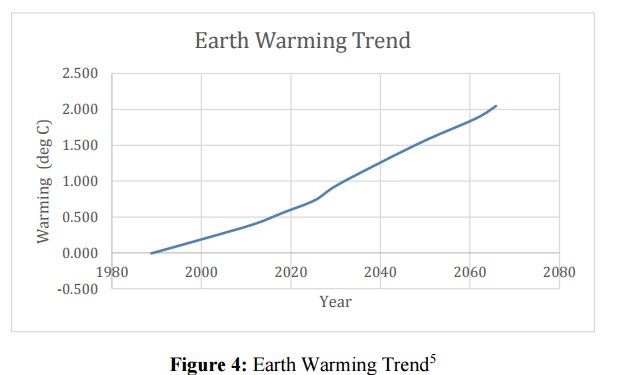
Source: NASA's Earth Observatory
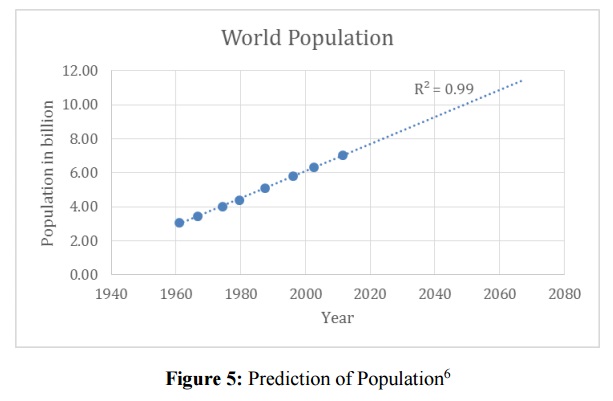
Source: World Bank
Taking into consideration 2030 calculations, the US would produce 4.5 billion tonnes of CO2e (8.2% of allowed emissions in 2030) as opposed to the 1.8 billion tonnes (3.2% of allowed emissions) that it should produce, given its population. If the deal were equitable, the US would have 2.5 times less GHG allowances.
In the case of China, the country would produce 17,400 million tonnesof CO2e (32% of allowed emissions in 2030). Together, both the countries will have occupied 40% of atmospheric carbon space by 2030 leaving only 60% of the space for the rest of the world. This, coupled with other countries carrying out BAU activities, leave little doubt that the G2 deal would take the world beyond a four degree Celsius to five degree Celsius mark.
Since we would not want that, we would have to politely ask India, Brazil, South Africa and the rest of the emerging economies to halt their emissions with immediate effect. Therefore, this deal is fundamentally contradicting in nature: it is meant to represent equity between countries, but remains thoroughly inconsistent on the equity footing on a global scale.
Considering the above facts, it is somewhat difficult to discern any aspect by which India would benefit from a similar deal. India emits approximately 4 times less CO2e per capita than China, and such a staggering difference should be acknowledged.
Moreover, by 2030, India’s CO2e emissions per capita would have risen to 3 tonnes (figure 6), which will be significantly less than China’s. India has no incentive to trigger similar climate deal, as this would neither benefit the country, nor the planet; but on the contrary, might harm the planet as India will not look for options of reducing climate change, as they are doing now.
However, such a climate deal would actually justify a drastic increase in India’s CO2e emissions, so as to catch up with China. This is clearly not desirable on any level for India or the world.
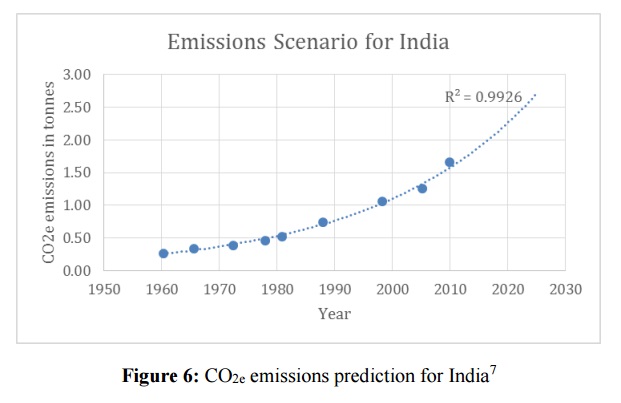
Source: World Bank
The primary recommendation for the international community would be to cease the mainstream comparison of China and India about the green path to follow.
India has a range of alternative diverse opportunities. For instance, India aims to implement 100GW of solar energy by 2022, a globally significant target. Focusing on ambitious but necessary goals is incontestably more important than signing a bilateral agreement that may prove to be inconsequential for everyone involved. Such deals are brilliant for political symbolism, but get very little done on the ground.
India can explore large opportunities in energy efficiency programs for vehicles and general infrastructure, which would lead to sizeable reductions in GHG emissions.
Sunita Narain, director general of Centre for Science and Environment, points out that, “India should push for a principle-based emissions reduction target for all countries. This is the only way we can force the US and China to reduce their emissions which are in line with the planetary limits”.
India should not pursue the same path of climate mitigation inefficiency, but rather focus on domestic shifts in investments and policies which have an immense potential in tackling the world’s most pressing challenge.
Hemant Bherwani, the author, is a business manager with GIST Advisory, which is a sustainability consulting firm helping corporates and governments to understand their impact on the environment and society.